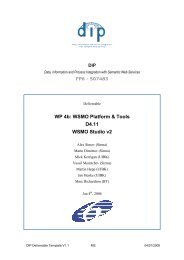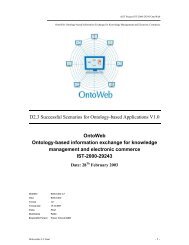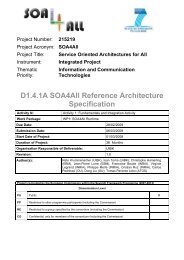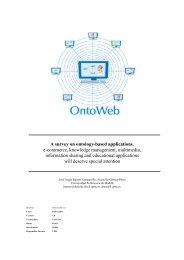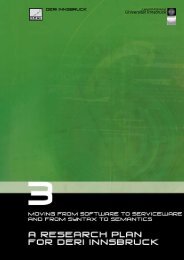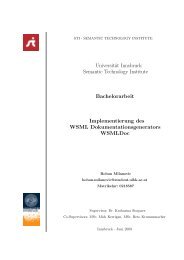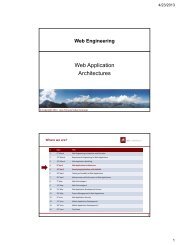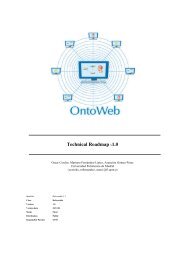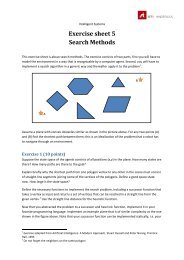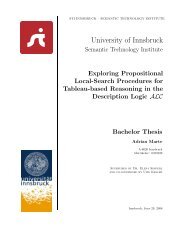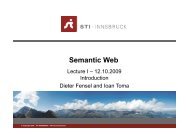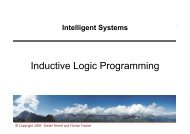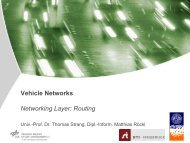D7 â Dynamic Ontology Management System (Design) - STI Innsbruck
D7 â Dynamic Ontology Management System (Design) - STI Innsbruck
D7 â Dynamic Ontology Management System (Design) - STI Innsbruck
Create successful ePaper yourself
Turn your PDF publications into a flip-book with our unique Google optimized e-Paper software.
D07_01_DOMS_F01<br />
Figure 4: Sesame architecture ([Broekstra et al., 2002])<br />
3.2.2 The Repository Abstraction Layer<br />
Repository Abstraction Layer (RAL) is a stable interface that offers RDF-specific methods to the<br />
clients and translates these calls to API methods for specific DBMS. As such, it allows the user to<br />
insert, delete and retrieve metadata from the repository. Currently (for version Sesame 0.6), only 2<br />
DBMS are supported by RAL: MySQL (http://www.mysql.com) and PostgreSQL (http://<br />
www.postgresql.org).<br />
RAL has been designed to transfer data in streams thereby facilitating the return of result sets as soon<br />
as they are available without having to store large amounts of data in memory ([Broekstra et al.,<br />
2002]). This gives the flexibility to access large volumes of data without the need for memory<br />
configuration or expensive hardware. As such, the repository is used for the persistent storage of the<br />
data. However, without caching the data in memory it impedes performance and minimizes one of the<br />
essential functionalities of RDBMS.<br />
In order to ameliorate this problem, layers of RAL can be stacked on top of another, allowing the<br />
functional modules to communicate with only the top layer of the abstraction layer. The RAL at the<br />
top then forwards these call to the layer beneath and the process goes on till the result is returned, as<br />
shown in Figure 5.<br />
IST-2001-33174 © h-TechSight Consortium October 2002 Page 12 of 27



